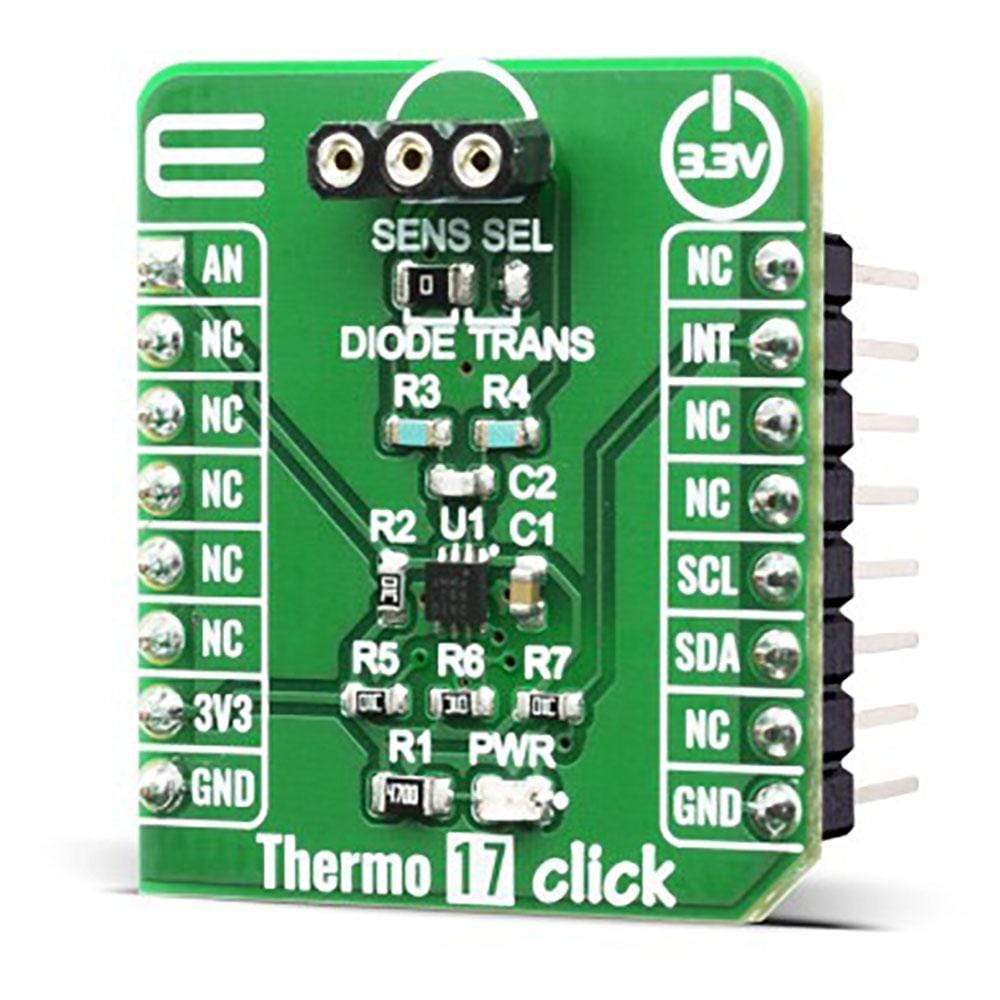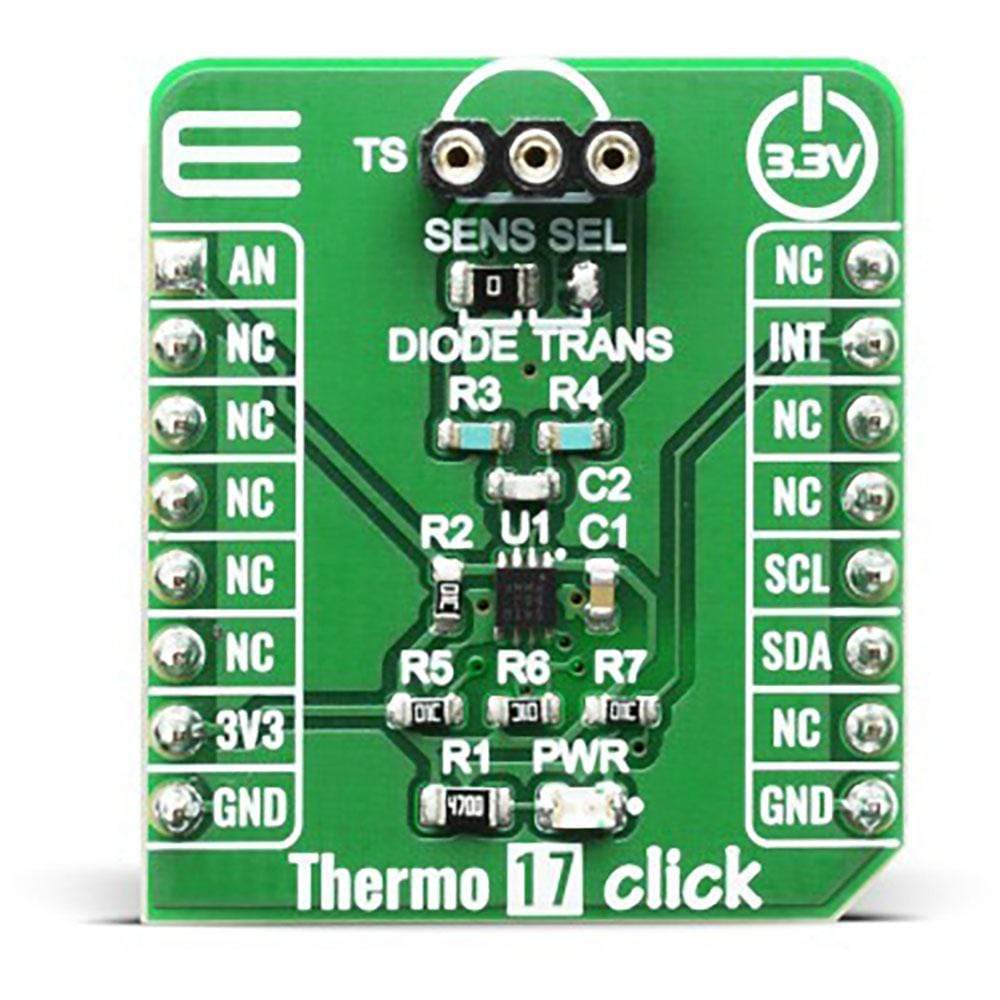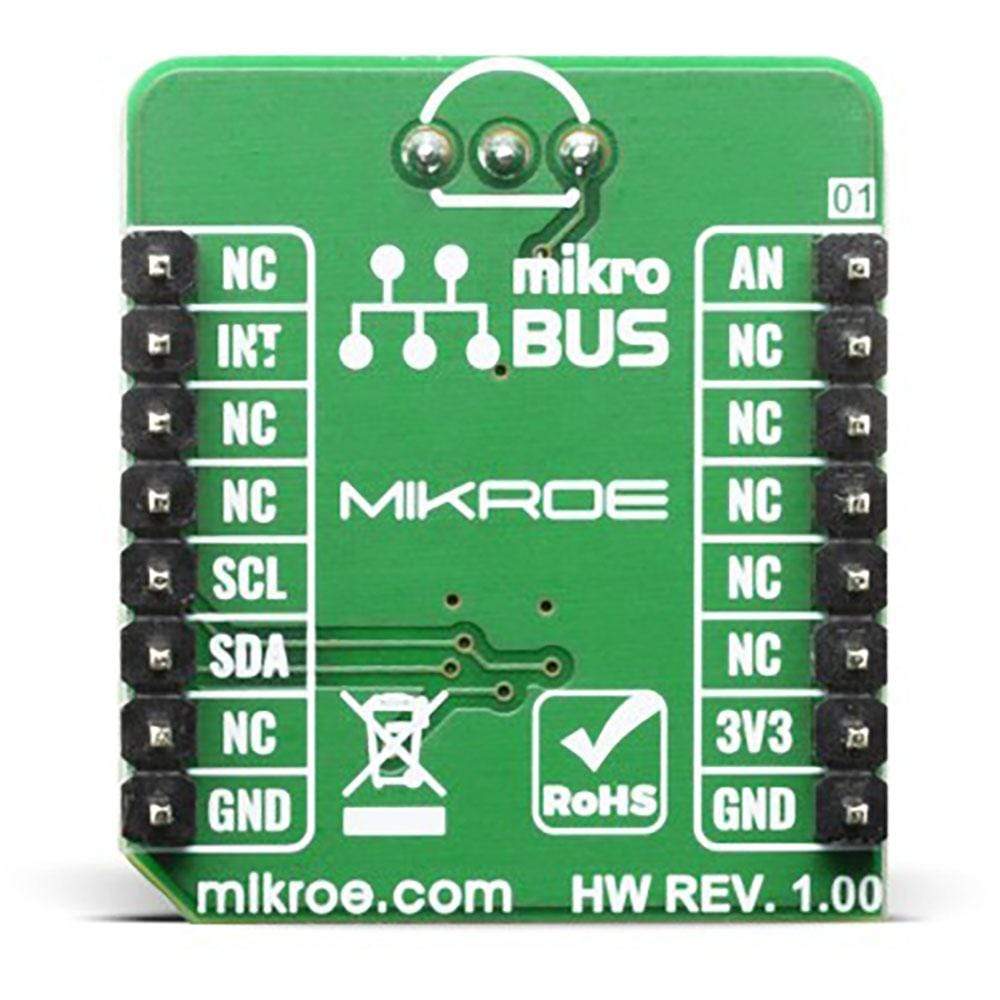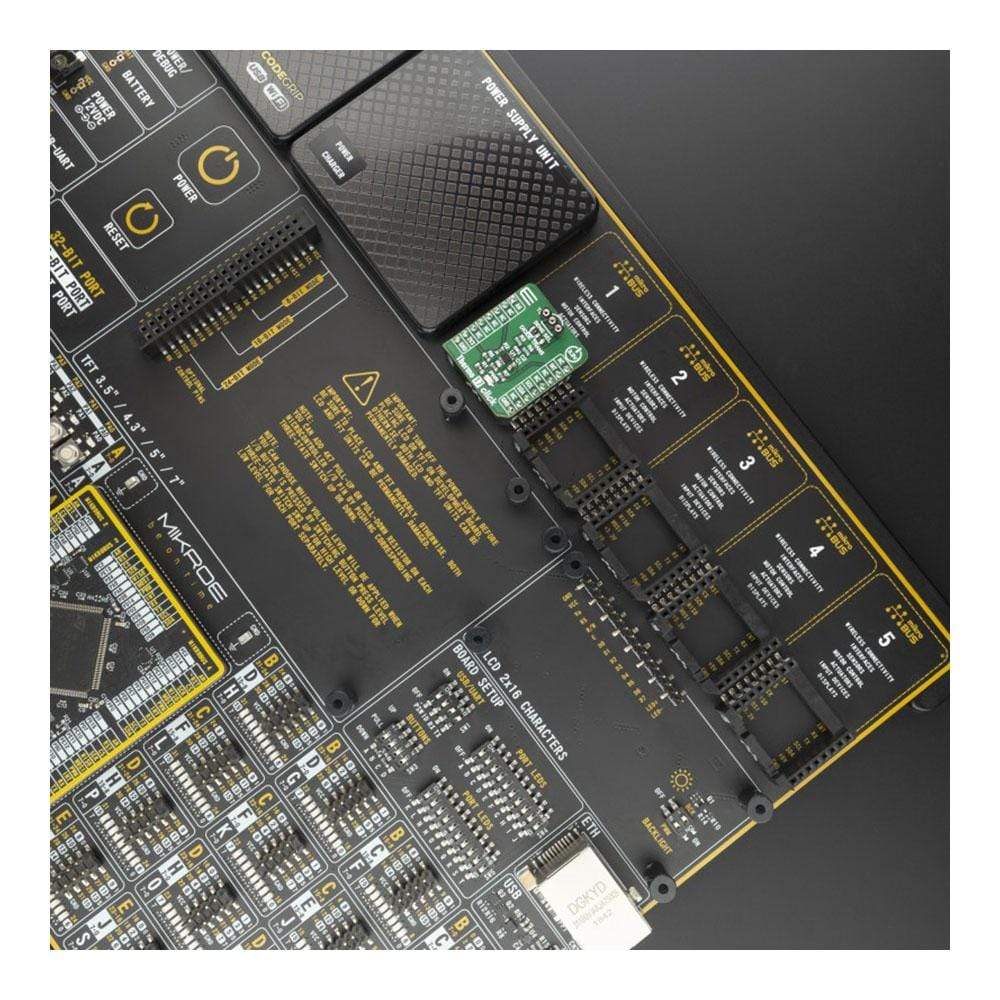



Overview
The Thermo 17 Click Board™is based on the TMP451-Q1, a high-accuracy, low-power remote temperature sensor monitor with a built-in local temperature sensor from Texas Instruments. Because of its main features, this Click Board™ is perfect for automotive infotainment systems, ECU processor temperature monitoring, TCM processor temperature monitoring, BCM processor temperature monitoring and LED headlight thermal control.
The Thermo 17 Click Board™ is supported by a mikroSDK compliant library, which includes functions that simplify software development. This Click Board™ comes as a fully tested product, ready to be used on a system equipped with the mikroBUS™ socket.
Downloads
Le Thermo 17 Click Board™ est basé sur le TMP451-Q1, un moniteur de capteur de température à distance de haute précision et de faible consommation avec un capteur de température local intégré de Texas Instruments. En raison de ses principales caractéristiques, ce Click Board™ est parfait pour les systèmes d'infodivertissement automobiles, la surveillance de la température du processeur ECU, la surveillance de la température du processeur TCM, la surveillance de la température du processeur BCM et le contrôle thermique des phares à LED.
Le Thermo 17 Click Board™ est pris en charge par une bibliothèque compatible mikroSDK, qui comprend des fonctions qui simplifient le développement logiciel. Ce Click Board™ est un produit entièrement testé, prêt à être utilisé sur un système équipé du socket mikroBUS™.
| General Information | |
|---|---|
Part Number (SKU) |
MIKROE-3994
|
Manufacturer |
|
| Physical and Mechanical | |
Weight |
0.016 kg
|
| Other | |
Country of Origin |
|
HS Code Customs Tariff code
|
|
EAN |
8606018718412
|
Warranty |
|
Frequently Asked Questions
Have a Question?
Be the first to ask a question about this.




